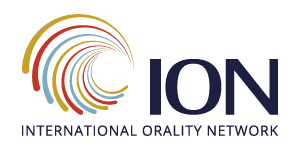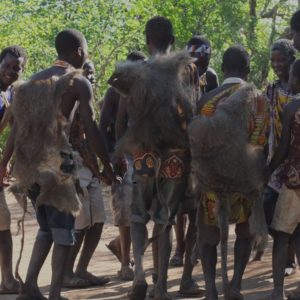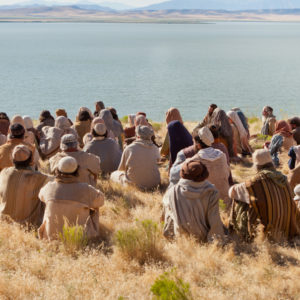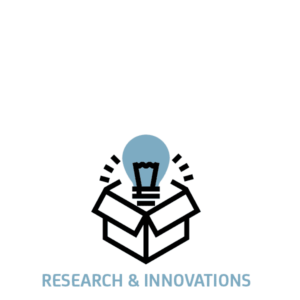The following is a chapter from the book ‘Oralities and Literacies: Implications for Communication and Education‘. A chapter will be posted here each week.
Chapter 2 – Story-based Trauma Healing
by Harriet Hill
In this chapter, I give a rationale and history of the development of Trauma Healing. In a second section, I explain the development of the Story-based Trauma Healing for oral communicators. Finally, I discuss outcomes: results, lessons learned, and possible implications for the broader field of orality.
What is the good news in today’s world where one-in-every-seven people have experienced significant trauma? Wars, riots, terrorist attacks, displacement, trafficking, Ebola, HIV, earthquakes, floods fill the evening news, not to speak of the less visible but widespread domestic abuse that turns home sweet home into war zone. Dr. Diane Langberg has said that trauma is the biggest mission field of the 21st century. If this is true, what is the good news?
Trauma isolates. It isolates us from one another. It isolates us from God. It even isolates parts of our brain from each other. It stresses our bodies so we are more likely to become ill. It dissociates us from the present, from our past and from the ability to think about the future. And it is passed on to our children, both by their experience and in their genes. Can people recover? Does the Bible have anything to say about suffering?
Rationale and History of Trauma Healing
In 2001, a small group of Wycliffe missionaries, mental health professionals, and church leaders met in Nairobi to answer the question coming from pastors in war zones: “Our people are acting strangely since the attacks. What can we do?” Little did that group know what would become of their efforts. Lessons that fused Bible and mental health principles were drafted, and over time, tested, taught and translated into languages of Africa. Word got out and requests came pouring in. By 2010, “Healing the Wounds of Trauma” was translated into more than 150 languages for communities around the world. I have served as chief editor and designer, but the plural ‘we’ is the best pronoun to use to describe the development of this ministry.
Our goal was to help church leaders help themselves heal of the trauma they had experienced, and then go on to be able to help others in their churches and communities. And this had to be done in the languages people were most comfortable speaking. So we took mental health and theological principles and expressed them in simple, translatable vocabulary, avoiding psycho- and theological jargon. We use the term ‘heart wounds’ for example, for ‘trauma’ and compare a heart wound to a physical wound to build the concept. The grief process is explained and dramatized as a journey through three villages: the village of denial and anger, the village of no hope, and the village of new beginnings. The hunt for the right metaphors, expressions, and exercises emerged over time with use in diverse contexts.
The draft lessons expanded to an unwieldy size frequently in the process, and then had to be pruned back so that they were short enough to be used in the ebb and flow of church or community life. As one psychologist working in an inner city mission in New York City said, “I get it. This book is very short, but it covers everything.” While there is certainly a place for academic tomes on trauma and healing, church leaders need something in short and simple.
The fusion of Bible and mental health grew as the years went by. We discovered that the Bible has a lot to say about healing from trauma. In fact, the Society of Biblical Literature has an entire unit on ‘the Hermeneutics of Trauma,” where scholars look at the Bible through the lens of trauma and disaster studies, and then look at trauma through the lens of biblical studies. In her book, Jeremiah: Pain and Promise, Kathleen O’Conner refers to the book of Jeremiah as a survival manual for trauma victims.
Gaining Acceptance
When we first presented the importance of people expressing their pain honestly and openly, church leaders in Africa resisted. “That’s fine for you in the West. You’re liberal. We Africans have faith in the promises of God.” Still, they experienced some relief of their trauma when they told their stories to one another, often the first time they had told anyone of their painful experiences. When we saw these pastors for the follow-up session, we examined the lament Psalms and had them write their own. Curiously, most African cultures have a lament tradition complete with certain types of songs, rhythms, dance, and postures, but most African Christians have not used that tradition in their Christian experience, thinking it to be pagan. One pastor from Nigeria then said, “When I get home, I’m teaching laments. I’ve never done this before, but this is what we need.” Once the link was made, African Christians can connect their rich tradition with their Christian experience.
In 2011, American Bible Society agreed to become the agent for the ministry, and since that time, the program has grown significantly. The program model has developed to be easy to contextualize and use. A website provides news and materials. A database records information on people, organizations, activities and translations. Today the good news of the healing of trauma in Christ is being proclaimed and experienced in 64 counties through the ministry of 3285 facilitators in over 400 organizations.
Healing the Wounds of trauma includes 11 lessons (or more), based on the following topics[1]:
- If God loves us, why do we suffer?
- How can the wounds of our hearts be healed?
- How can we grieve well?
- How can we help children who have experienced bad things?
- How can we help people who have been raped?
- Ministering in the midst of HIV-AIDS/ 6a Domestic Abuse / 6b Addictions / 6c Suicide
- Care for the caregiver
- Taking our pain to the cross
- How can we forgive others?
- Living as a Christian in the midst of conflict
- Looking ahead
Each lesson begins with a story of trauma. These stories are contextualized for the audience: Latino stories, Sri Lankan stories, North American stories, Middle Eastern stories and so forth. The lessons then develop the topic using a participatory approach, which draws on the knowledge, experience and creativity of the participants through discussion, skits, exercises, art-making, and so forth. Participants compare Bible and culture on the lesson’s theme. The lessons are a fusion of biblical and mental health principles. Hundreds of passages from Genesis to Revelation are explored.
Along the way, questions came. What about the children? When adults suffer, the children suffer doubly as they have no voice, and often lack the vocabulary to express their pain. The children’s Healing Hearts Club curriculum was developed and now 160 facilitators are helping traumatized children in seven countries and counting. [2]
The Development of Story-Based Trauma Healing
Along the way, another question came: what about oral communicators? In fact, trauma is often high where literacy is low, among marginalized populations. In 2011, in collaboration with The Seed Company, Story-based Trauma Healing program was launched in Democratic Republic of Congo, lining up three key missiological strategies: orality, trauma healing, and ‘heart’ language.
Like translation, orality does not need a separate communication theory. Relevance Theory of communication explains human communication in two basic principles. The first principle is that “human cognition tends to be geared to the maximization of relevance” (Sperber and Wilson 1995:260). As Sperber explains:
At any given time, humans perceive more phenomena than they are able to pay attention to, and they have more information stored in memory than they can exploit. Cognitive efficiency involves making the right choices in selecting which available information to attend to and which available past information to process it with (1996:114).
To attract the audience’s attention, communicators have to make their stimulus the most compelling one available. Given the plethora of stimuli, how do we choose which stimuli will be relevant?
We engage in communication is to improve our mental representation of the world—our cognitive environment. The better our mental representation of reality, the better we can manage life. The fact that speakers request the audience’s attention communicates the belief that they think they have something the audience should know. This is described by the second principle of relevance: “Every act of ostensive communication communicates a presumption of its own optimal relevance” (Sperber and Wilson 1995:260).
People give attention to communicators in faith that they will benefit from the message. These improvements in the cognitive environment are what people are looking for when they communicate. They are referred to as cognitive effects. The more cognitive effects a communication has, the more relevant it is. This is described by the first condition to the second principle of relevance: “An assumption is relevant to an individual to the extent that the positive cognitive effects achieved when it is optimally processed are large” (ibid.:265).
Relevant communication results in cognitive effects, but it takes effort to process communication, and effort is a negative factor which reduces relevance. Relevance is determined by the relationship between the cognitive effects gained and the effort expended. The effort-effect dynamic is described in the second condition of the second principle of relevance: “An assumption is relevant to an individual to the extent that the effort required to achieve these positive cognitive affects is small” (ibid.:265).
People give their attention to stimuli that they think will be the most relevant ones available to them, and then unconsciously monitor the effort-effect relationship as the communication proceeds. If, over a period of time, they find the effort exceeds the benefits, and they are unable to repair the communication situation, they gradually stop paying attention to it in favor of more relevant stimuli.
High-Trauma Zones
Applying relevance theory to oral communicators in high trauma zones, we found that they were highly motivated to give their attention to Trauma Healing. It was not hard to get their attention, as they needed help to know how to heal from the wounds of their hearts. To reduce processing costs, we expressed the message in the language they preferred, and in oral medium. Then we watched to find the channels they found most optimal for communicating the Trauma Healing message to their communities.
Like many communities around the world, those we worked with were a mix of readers and oral communicators, and a mix of bi- or multi-lingual people and those monolingual in a minority language. They used a mix of written and oral communication, and a mix of minority language and majority language, according to the context. As communicating the Good News of healing in Christ was our primary goal, we were not rigid with regard to language or medium.
To make the content of the trauma healing lessons more accessible to oral communicators, we had already seen facilitators teach most of the contents of the lessons by discussing the stories that the lessons begin with. This gave us a clue on how to proceed. We listed the main points of each lesson and determined what could be taught from discussing the story at the beginning of each lesson. Then we looked for Bible stories that could address as many of the remaining points as possible. Then we worked out discussion questions that brought out the trauma-related points from the stories, much like a topical Bible study.
We started each discussion with three basic questions:
- What happened first in this story? Next? Next?
- What did you like in this story?
- What did you find difficult in this story?
Then we looked at what was not covered by the current life and Bible stories for each lesson. In some cases, we revised the current life stories so they covered additional points. We covered some points by Scripture verses put to song. Other points were covered by exercises, which were memorable for oral communicators. Some lessons were divided into two. Other points were simply dropped as non-essential. Today, the typical Story-based curriculum includes 23 stories (11 current life stories, 13 Bible stories), 13 Scripture songs. (See appendix B.)
For classic trauma healing facilitators, facilitator training involves a one-week workshops, followed by a 6-to-9-month practicum where they used what they had learned. Then they come back for a second one-week workshop to nail down the competencies facilitators need, which are:
- Able to manage personal well-being.
- Able to work on a team.
- Able to help traumatized people (listening, confidentiality, and so on).
- Able to lead groups in a participatory way.
- Demonstrated understanding of the content.
Story-based trauma healing requires three workshops. This allows for facilitators to learn the materials and method, experience healing of their own trauma, and to develop a plan for using the materials in their churches and communities. If they are translating the materials into their languages, the workshops require ten days each. If translation is not needed, they can require seven days each. In the first workshop, the facilitators learn and translate half of the stories, in the second they covered the remaining stories, and in the third workshop, all the stories were checked and rerecorded in a ‘final’ version.
We tried various means to provide a reference audio version of the stories. We found MP3 players to be too complicated for many to use. In addition, they looked like cell phones and could easily be stolen, and then who would be liable? Sabers worked much better once we figured out how to transfer the stories to the players. They are solar powered, simple to operate, indestructible, and clearly not a cell phone.
We tried to keep things as oral, but the ground swell from the participants was to get written copies of the stories as well as the oral and audio. This strong request came from those speaking languages that did not yet have established orthographies. “How will we train others?” they said. “We can’t give them all an MP3 player or a Sabre.” When they went to the villages in North Kivu to train church leaders, they needed to leave behind something for people refer back to. The oral telling was not enough for facilitators to learn the stories and tell them to others, given the amount of time they had with them. We provided print copies of the stories and discussion questions, with example responses in the appendix. Most communities have some people who read for the benefit of the group.
We were also surprised by the fluidity of the languages used. Once facilitators knew the stories, they told them in the language that was best for their audience. In east DRC, this was often Swahili rather than their minority languages. We had no problem with that.
Results and Implications
Story-based trauma healing has been carried out in four locations so far: Goma in the Democratic Republic of Congo (DRC), Yida camp in South Sudan, Bangui in Central African Republic (CAR), and the Zemio area of CAR, where LRA are active. The Goma group translated the stories into four local languages. They learned the stories with ease and told them everywhere they went: in church meetings, with neighbors, at funerals, in youth groups, in healing groups, in women’s centers, and so forth. They risked their lives and found local funding to bring the good news of healing in Christ to the hard-hit villages and towns in N Kivu.
In Yida camp, the facilitators translated the stories into seven local languages. They had more difficulty learning the stories. The story set had to be scaled back and the number of workshops increased from three to four. They simply could not remember the stories easily. However, once they received the Sabres, they either played or told the stories with enthusiasm and many experienced healing of their trauma. Muslims needed healing, too, and came to Christ as a result.
In Bangui, the facilitators translated the stories into five languages. They were able to remember the stories reasonably well. They told the stories everywhere in that land hit so hard by on-going trauma.
In Zemio, the stoires were translated into Pazande in advance. However, the translation did not match the dialect of Pazande spoken in the Zemio area, so the group found it easier to interpret orally from French during the first workshop. Since that time, the translation has been improved. Given the isolation of that part of CAR due to the on-going war there, it has been hard to get detailed news from the Zemio area. It appears that the stories are traveling well and helping the churches respond to their trauma.
What made the difference in these varied responses? More research is needed, but we know that all three locations are experiencing ongoing, complex trauma, so the degree of trauma can’t be the explanation. One possible difference is that the schools in DRC and CAR have continued to function through the twenty years of conflict, while this has not been the case in South Sudan. We know from change theory that those who have adopted one innovation are more likely to adopt another. Perhaps formal education explains the difference in people’s ability to learn new things, including Story-based Trauma Healing. If this is the case, formal education is orality’s friend, not foe.
Another difference is that the Yida participants were in a transit refugee camp. The United Nations had plans of moving the camp further south, away from the border with Sudan. Bombs continued to fall on their homelands, and people went back and forth to visit family members still in the homeland. People who are traumatized have difficulty concentrating on the task at hand, as a part of energies are consumed with the trauma, going over it over and over. Could this unsettledness have added to their inability to concentrate and learn the stories?
Overcoming Access Limitations
In the last couple of years, another question has been asked: what about people who are traumatized in places where we have no access? The question first came up in the Zemio area of CAR affected by the Lord’s Resistance. We began making audio trauma healing programs for broadcast, in partnership with Trans World Radio, hoping to broadcast through the Invisible Children transmitters in the area. In principle, people need to tell their stories to another live person who listens empathetically for healing to take place. However, the audio programs can give at least some help and hope, and wherever possible, callers-in can be put in contact with facilitators in their area.
These programs are just being aired now in English in Kenya as the pilot test. Each thirty-minute program contains a current life story, discussion by a small group of people, a Bible story and discussion and a Scripture song. Facilitators have access to the recordings and to booklets with the stories in print, if desired, We have yet to get feedback on impact.
While the Kenyan story set was still being edited, Ebola broke out in West Africa. We responded to requests and, working with Life Focus TV, prepared a ten-program series on Ebola Audio Trauma Healing in Liberian English, in collaboration with Life Focus TV. These are now being broadcast in collaboration with SIM and Bible Society of Liberia. The borders are now open, so facilitators can now be trained to follow-up with people who need more help.
The audio and oral trauma healing is a fast-growing field. With the Nepal earthquake, we are beginning to develop an audio version of Trauma Healing programs for use by partners there. Bible Societies are currently developing Audio Trauma Healing in nine languages of East Africa: Swahili of DRC, Lingala, Sango, Lugandan, Acoli, South Sudanese Arabic, Tanzanian Swahili, Kirundi, and Kiyarwandan.
Our goal is to reach people who are traumatized with the good news of healing in Christ in the most effective way possible. Is Story-based Trauma Healing the last word? Or the audio programs? Not necessarily. Facilitator Leah Visosky of Pioneer Bible translators is exploring the use of drawings as a middle path between the written and the oral. Results forth-coming!
The combination of trauma healing, local language, and orality is a huge break-through to reach many of the world’s most vulnerable people.
Notes
[1] According to the context, people can select some or all of the “6” series.
[2] DRC, Kenya, Nicaragua, South Sudan, Thailand, Uganda, United States.
« Oralities & Literacies – Chapter 3 &#...Orality Bible Project »








